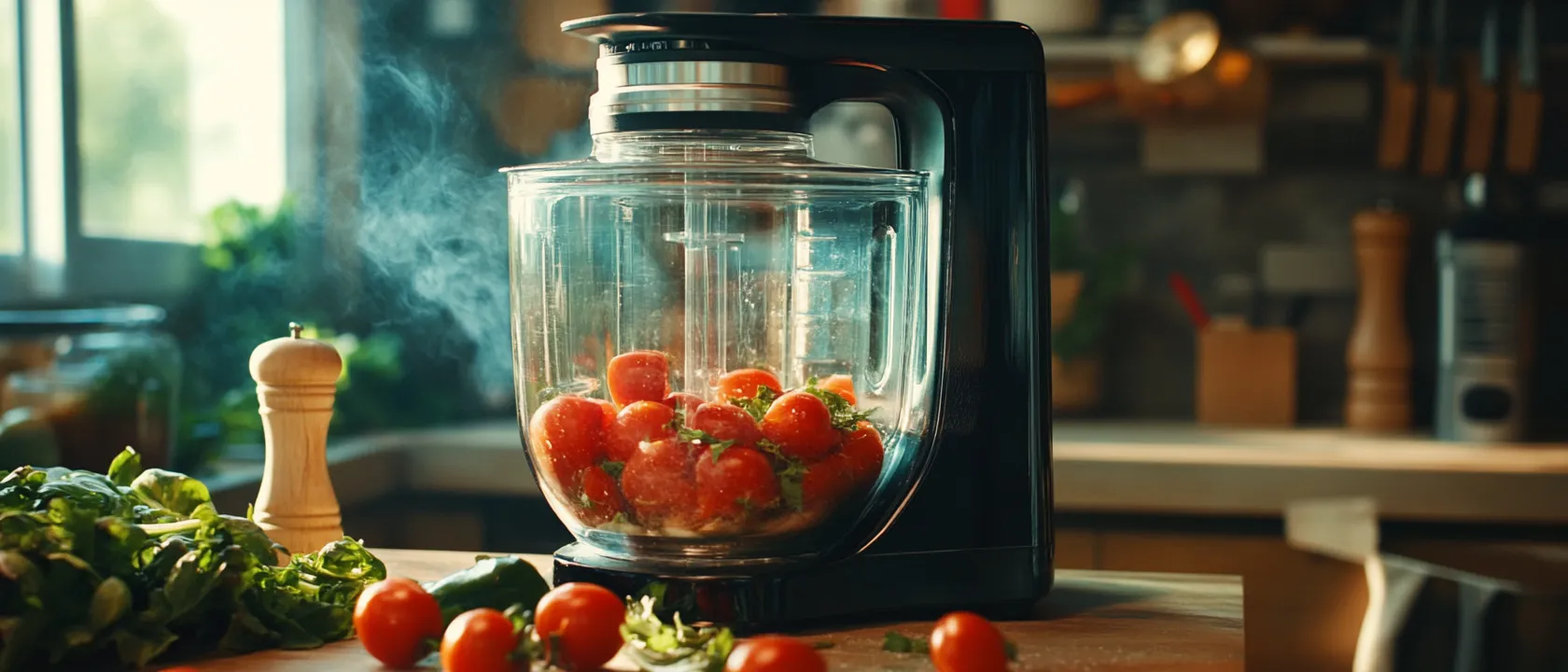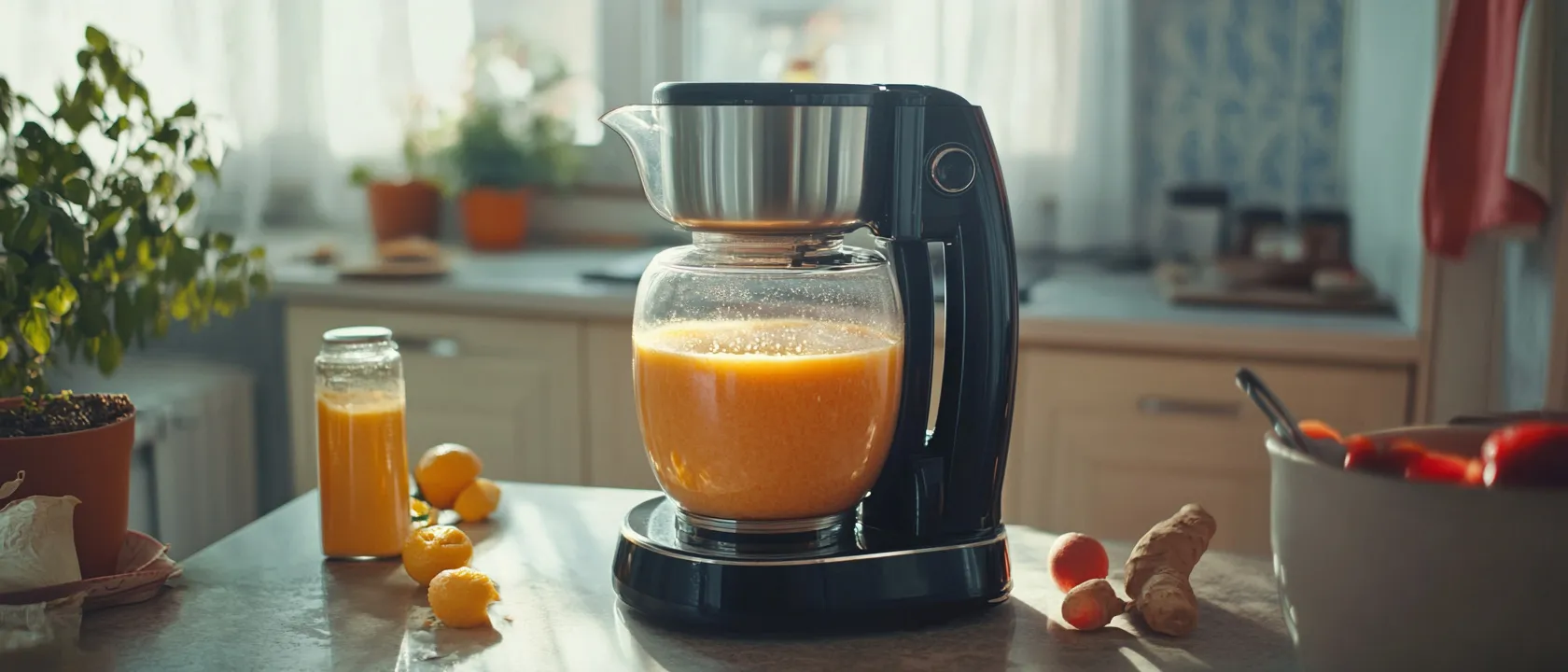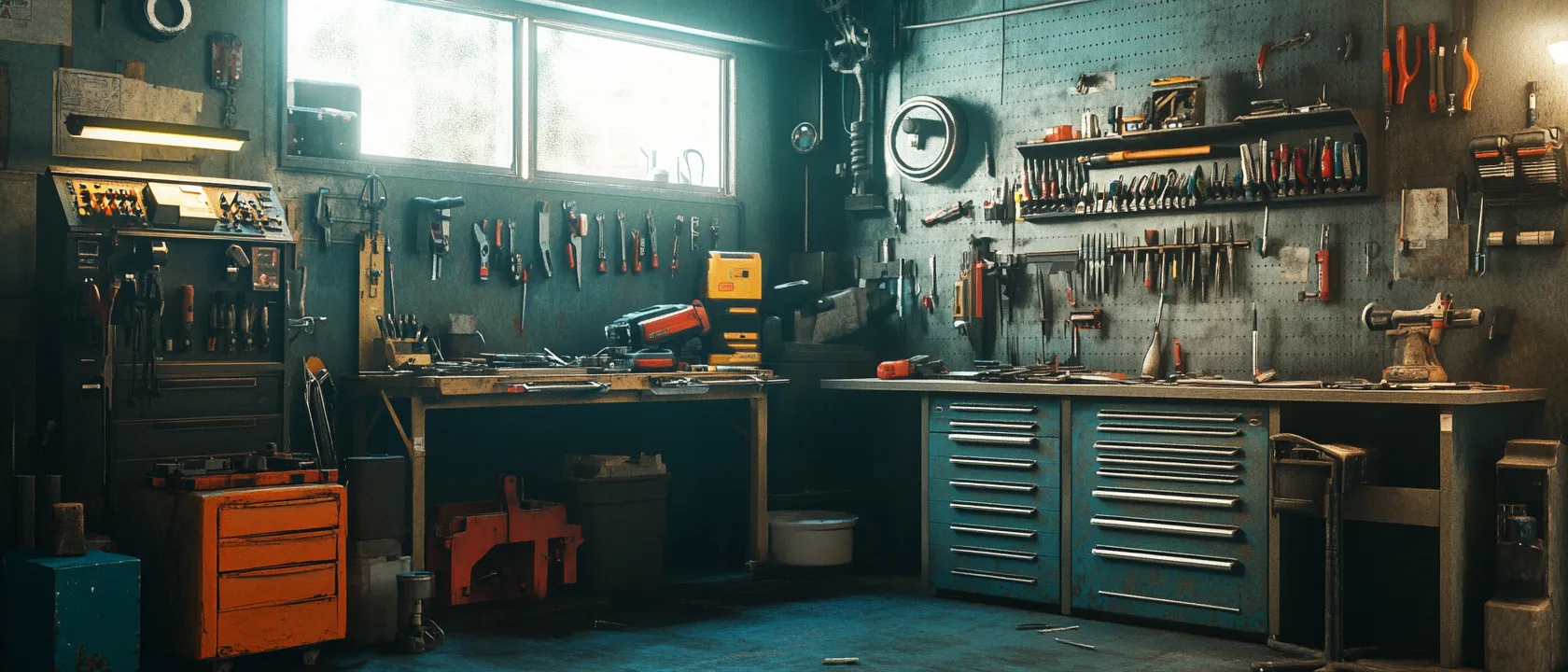The high-performance blender has evolved from a niche appliance for health enthusiasts to an essential kitchen tool for serious home cooks and culinary professionals alike. While Vitamix has long dominated this premium market segment—to the point where its name has become nearly synonymous with high-end blending—a diverse ecosystem of sophisticated alternatives has emerged, each offering distinctive advantages that might better suit particular needs and preferences. These machines represent significant investments, often costing between $400-$1,500, which raises the critical question: which luxury blenders truly justify their substantial price tags, and under what circumstances might they outperform the category-defining Vitamix?
This comprehensive analysis examines the premium blender landscape beyond the market leader, evaluating machines based on performance capabilities, engineering philosophy, durability expectations, and specific use case advantages. From professional-grade powerhouses to sophisticated European designs to specialized commercial innovations, we’ll explore which alternatives deliver genuine value and which primarily offer marketing differentiation without substantive benefits.

Understanding High-Performance Blending: What Justifies the Premium Price?
Before evaluating specific brands, it’s essential to understand what technical factors genuinely contribute to superior blending performance and therefore justify premium pricing.
The Core Elements of Blender Performance
High-performance blenders distinguish themselves through several key technical aspects:
Motor Power and Design represents the foundation of blending capability. Premium blenders typically feature motors ranging from 1,400-3,000 watts, but raw horsepower alone doesn’t tell the complete story. More significant factors include:
- Torque characteristics (turning force, particularly at low speeds)
- Motor cooling systems to prevent overheating during extended operation
- Power delivery consistency under varying loads
- Motor housing isolation to minimize vibration and noise
Blade Engineering significantly impacts both processing effectiveness and longevity:
- Material composition (typically hardened stainless steel with varying alloy formulations)
- Geometry and angle of cutting surfaces
- Bearing quality and sealing mechanisms
- Hammermill effect (the blade system’s ability to pull ingredients down into the cutting zone)
Container Design is perhaps the most underappreciated factor in blending performance:
- Shape profile that creates effective vortex action
- Material construction affecting both durability and noise
- Capacity and practical working volume
- Coupling mechanism connecting to the motor base
Control Systems range from simple variable speed dials to sophisticated digital interfaces:
- Precision of speed regulation
- Pre-programmed cycle sophistication
- Feedback mechanisms that adjust performance based on load
- User interface intuitiveness
Noise Management becomes increasingly important as motor power increases:
- Sound dampening technologies
- Isolation systems for motor and container
- Airflow design to maintain cooling while minimizing sound transmission
These elements combine to create machines capable of processing foods in ways that conventional blenders simply cannot achieve—from pulverizing tough ingredients to microscopic particle sizes to heating soups through friction alone to creating perfect emulsions that remain stable for extended periods.
The Leading Contenders: Premium Alternatives to Vitamix
With these performance factors in mind, several manufacturers have developed distinctive approaches to high-performance blending that deserve serious consideration alongside the category leader.
Blendtec: The Digital Powerhouse
Founded by engineer Tom Dickson (famous for the “Will It Blend?” marketing campaign), Blendtec offers a distinctly different approach to premium blending centered on digital control and raw power.
Distinctive Engineering Approach:
- Patented “WildSide+” jar with fifth wall design that disrupts circular flow patterns
- Blunt blade technology (intentionally dull blades that crush rather than slice)
- Digital touchscreen interfaces with precise cycle programming
- Exceptionally powerful motors (up to 3.8 peak horsepower in commercial models)
- Lower profile design for easier storage under cabinets
Performance Advantages:
Blendtec excels at processing extremely hard ingredients like whole grains, coffee beans, and frozen desserts. The blunt blade design eliminates concerns about blade sharpness deteriorating over time and provides exceptional particle size reduction for smoothies and flour milling. The digital preset cycles offer more precise control and hands-free operation compared to Vitamix’s predominantly manual approaches.
Key Models:
- Designer 725 ($650): Their flagship home model with 100-speed touch slider and Smart Blend technology
- Professional 800 ($900): Features sound dampening technology and the most powerful motor in their consumer line
- Commercial Stealth 885 ($1,500): Commercial-grade construction with advanced programming capabilities
Value Assessment:
Blendtec justifies its premium pricing primarily through superior digital control systems and exceptional power delivery. For users who value preset programming, touch interfaces, and maximum power, Blendtec offers legitimate advantages over Vitamix. However, the machines typically produce slightly more noise and the container design creates different blending dynamics that some users find less effective for certain tasks like nut butters and thick mixtures.
Breville Super Q: The Refined Alternative
Australian appliance maker Breville has established itself as a premium kitchen brand with a focus on thoughtful design details and user experience refinements. Their Super Q blender represents their flagship entry into the high-performance category.
Distinctive Engineering Approach:
- Noise suppression technology with damping mechanisms
- Comprehensive preset programs with timer displays
- Vac Q attachment compatibility for vacuum blending
- Brushed metal base construction with sophisticated aesthetic
- Included personal blending cup with travel lid
Performance Advantages:
The Super Q delivers its most distinctive benefit through significantly quieter operation than both Vitamix and Blendtec—approximately 10-15 decibels lower at comparable power settings. The machine also features more intuitive controls than many competitors, with clear function labeling and tactile feedback. The vortex action created by its container design excels at incorporating ingredients without requiring the “tamper” tool as frequently as Vitamix.
Key Models:
- Super Q ($500): The flagship model with comprehensive features
- The Q ($400): Slightly reduced feature set but same core performance
- Commercial versions ($800+): Enhanced with heavier-duty components
Value Assessment:
The Super Q represents a compelling value proposition primarily through its acoustic engineering and refined user experience. For noise-sensitive environments or users who prioritize elegant design and intuitive controls, it offers genuine advantages over Vitamix at a comparable price point. Performance for most blending tasks equals Vitamix, though it may struggle slightly with the most demanding applications like making almond butter from raw nuts.

KitchenAid Pro Line Series: The Culinary System
Leveraging their reputation in stand mixers, KitchenAid’s entry into ultra-premium blending focuses on precision control and culinary versatility.
Distinctive Engineering Approach:
- Die-cast metal construction throughout
- Asymmetric blade positioned to create precision vortex
- Magnetic drive system with interlocking secure connection
- Insulated dual-wall container design
- Tamper with measured ingredient cup built in
Performance Advantages:
KitchenAid’s Pro Line blenders deliver exceptional low-speed torque and control, allowing for more precise texture management in culinary applications. The thermal control jar helps maintain temperature of hot or cold ingredients more effectively than single-wall alternatives. The magnetic drive system eliminates some potential failure points in traditional couplers, potentially enhancing longevity.
Key Models:
- Pro Line Series ($550): Their flagship with thermal control jar
- K400 ($300): Mid-range alternative with similar design philosophy
- Commercial Culinary Blender ($1,000+): Built for professional kitchen environments
Value Assessment:
The KitchenAid Pro Line offers its greatest value to culinary-focused users who prioritize precise control over maximum power. For creating delicate emulsions, maintaining temperature-sensitive ingredients, and achieving specific textures, its engineering provides genuine advantages. However, for pure power applications like grinding grains or creating super-smooth green smoothies, it may not match Vitamix’s raw performance despite its similar price point.
Wolf Gourmet: The Professional’s Choice
From the makers of professional-grade cooking ranges, Wolf’s entry into blending brings a commercial approach to home kitchens with emphasis on durability and consistent performance.
Distinctive Engineering Approach:
- All-metal drive coupling for enhanced durability
- Exceptionally heavy base (over 15 pounds) for stability
- Infinite speed control dial with tactile precision
- Emulsion cup built into the main lid design
- Commercial-grade components throughout
Performance Advantages:
Wolf blenders excel at maintaining consistent performance under heavy loads without overheating or power fluctuations. The substantial construction reduces counter movement during operation, while the precision dial allows for more exact speed adjustments than many digital alternatives. The emulsion cup feature creates perfect dressings and sauces with controlled ingredient incorporation.
Key Models:
- High-Performance Blender ($650): Their singular model with all premium features
Value Assessment:
The Wolf Gourmet blender justifies its premium price primarily through exceptional build quality and professional-grade engineering. For users who plan daily heavy use over many years, its durability-focused design may provide better long-term value than alternatives with more features but less robust construction. However, the limited preset functionality and single container option make it less versatile for users who prioritize convenience features.
Thermomix TM6: The Integrated Cooking System
Though not strictly a blender, the Thermomix represents the ultimate evolution of the category into a comprehensive cooking device with blending at its core.
Distinctive Engineering Approach:
- Heating element integrated with blending mechanism
- Digital touchscreen with guided cooking functionality
- Precision scale built into the base
- Temperature control from 37°C to 120°C
- Integrated connectivity with recipe platform
Performance Advantages:
The Thermomix delivers the unique capability to simultaneously blend and cook with precise temperature control, enabling techniques impossible with traditional blenders. The guided cooking system virtually eliminates recipe failure by controlling timing, temperature, and blending speed. The built-in scale allows for single-vessel preparation without separate measuring tools.
Key Models:
- TM6 ($1,500): The current flagship model with full functionality
- No alternative models are offered in this distinctive category
Value Assessment:
The Thermomix commands the highest price in this comparison but offers functionality far beyond conventional blending. For users interested in comprehensive food preparation rather than simply blending ingredients, it provides capabilities unmatched by any conventional blender. However, for those primarily seeking traditional blending functions, the substantial price premium may be difficult to justify despite its exceptional engineering.
Specialized Performance Categories: Where Alternatives Excel
Beyond general-purpose performance, several luxury blenders have established superiority in specific applications that may align with particular cooking preferences.
Commercial Bar Blending: Waring and Hamilton Beach Eclipse
For those who prioritize frozen drink preparation above all else, commercial bar blenders offer capabilities that exceed even premium consumer models:
Waring MX1200XTX ($600) and Hamilton Beach Eclipse ($850) feature:
- Specially tuned high-torque motors optimized for ice crushing
- Polycarbonate containers designed to withstand thousands of frozen cycles
- Simplified controls focused on consistency and speed
- Programmable cycles with memory features for perfect repeatability
- Sound enclosure options for noise reduction
These machines excel at creating perfect frozen consistency with minimal effort and maximum durability under heavy use. For households that entertain frequently or prioritize frozen preparations, these commercial systems may provide better results and longevity than even premium consumer alternatives, justifying their substantial cost.
Vacuum Blending: Kuvings Vacuum Blender
The Kuvings Vacuum Blender ($550) represents the emerging category of machines that remove air before blending, offering several distinct advantages:
- Oxidation reduction for better nutrient preservation and color retention
- Enhanced flavor extraction and intensity
- Improved stability of emulsions and mixtures
- Reduced foam generation for better texture
- Lower temperature rise during extended blending
For health-conscious users focused on maximum nutrient preservation and flavor quality, vacuum blending technology provides benefits impossible with conventional systems regardless of power or blade design. While specialized in function, this technology offers legitimate performance advantages for specific applications.
Professional Culinary Systems: Robot Coupe
For serious culinary applications, the Robot Coupe Blixer line ($1,000-$2,500) represents the gold standard in professional kitchens:
- Combination blending and cutting technologies
- Exceptionally fine texture control for mousses and emulsions
- Built to run continuously in commercial environments
- Precisely engineered for specific culinary applications
- Unmatched durability under extreme use conditions
These machines deliver professional-grade texture refinement beyond what consumer models can achieve, regardless of price. For home cooks seriously dedicated to advanced culinary techniques requiring precise texture control, these commercial systems may justify their substantial investment through capabilities unavailable in consumer alternatives.

Making the Investment Decision: Beyond Marketing Claims
With luxury blenders representing significant investments, several factors beyond brand prestige should inform purchase decisions:
Durability Expectations and Warranty Reality
Premium pricing should correlate with exceptional longevity:
- Motor warranty length and terms: Ranges from 7-10 years for premium models, but the fine print matters significantly. Shipping costs for warranty service can exceed $50 each way.
- Repairability assessment: Some brands (notably Vitamix and Blendtec) offer comprehensive repair programs and parts availability, while others effectively require complete replacement if failures occur outside warranty.
- Bearing and coupler design: These represent the most common failure points in high-performance blenders. Metal-to-metal couplings generally outlast plastic alternatives but may transmit more noise.
- Container material durability: Tritan copolyester (used by most premium brands) offers good impact resistance but can eventually cloud with abrasive ingredients. Glass options provide superior resistance to clouding but increase weight and breakage risk.
Performance Alignment with Primary Usage
The ideal luxury blender depends heavily on intended applications:
- Smoothie enthusiasts are best served by machines with excellent vortex action and powerful motors—Vitamix and Blendtec remain category leaders, with Super Q offering the best noise profile.
- Serious cooks focused on culinary applications may prefer the precision control of Wolf or KitchenAid Pro Line, or potentially justify the substantial premium for Thermomix’s integrated cooking capabilities.
- Nut butter and flour makers benefit from the exceptional torque and cooling systems of Vitamix’s commercial series or Blendtec’s highest-power options.
- Frozen drink specialists should consider commercial bar blenders from Waring or Hamilton Beach despite their more limited general versatility.
Total Ownership Cost Considerations
The purchase price represents only part of the luxury blender investment:
- Container replacement costs: Additional jars range from $100-300 depending on brand and type, a significant consideration for those who may want multiple containers for different applications.
- Accessory ecosystem: Some brands offer extensive compatible accessories (Vitamix leads here), while others provide limited or no expansion options.
- Resale value: Premium brands maintain different value retention on secondary markets, with Vitamix and Thermomix typically retaining 50-70% of original value after several years compared to 30-40% for most alternatives.
- Electrical consumption: Higher-powered models can consume 3-5 times the electricity of standard blenders during operation, a minor but real consideration for frequent users.
Conclusion: Identifying True Value in Premium Blending
After comprehensive evaluation, several patterns emerge regarding which luxury blenders truly justify their premium pricing for particular users:
Blendtec provides legitimate value for users who prioritize pure power, digital precision, and hands-free operation. The Designer 725 offers the strongest balance of features to cost, while their commercial models deliver unmatched raw performance for demanding applications.
Breville Super Q represents the best investment for noise-sensitive environments where acoustic engineering justifies its premium price. Its refined user experience and thoughtful design details deliver tangible benefits that technical specifications alone don’t capture.
Wolf Gourmet offers exceptional value for demanding users focused on durability and consistent performance rather than advanced features. Its commercial-grade construction may provide superior long-term economy despite higher initial cost.
Thermomix TM6 stands alone in justifying a substantial premium through fundamental capability expansion rather than incremental performance improvements. For users who will utilize its cooking capabilities, it represents a category-redefining technology rather than simply an upgraded blender.
For specialized applications, Waring commercial blenders and the Kuvings Vacuum Blender deliver specific performance advantages that may justify their cost despite limited general-purpose versatility.
The luxury blender market ultimately rewards informed, specific purchasing decisions rather than simply choosing the most expensive option. The ideal investment depends on aligning specific performance characteristics with individual priorities and usage patterns. The best luxury blender isn’t universally the most powerful or the most expensive, but rather the one whose particular engineering emphasis best matches your specific culinary needs and preferences.
By understanding the distinctive advantages each premium manufacturer offers, consumers can make investments that deliver genuine long-term value rather than merely expensive disappointments. In this specialized appliance category, the truth remains that the right tool for one person may be entirely wrong for another, regardless of price or specifications.







